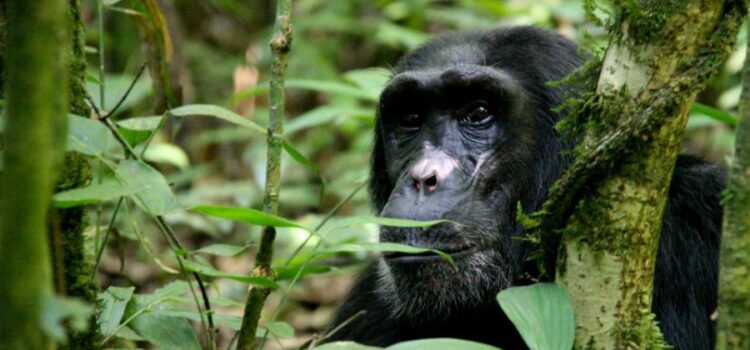
Introduction:
Africa, the continent of diversity and wonder, hosts an array of magnificent wildlife, including the charismatic chimpanzees. Among the various habitats across Africa, certain regions stand out as primary homes to these intelligent primates. From the dense rainforests to the savannah woodlands, chimpanzees thrive in diverse ecosystems, each with its unique challenges and opportunities. In this exploration, we delve into the habitats of chimpanzees across Africa, their behavioral adaptations, and the conservation efforts aimed at protecting these fascinating creatures.
Distribution of Chimpanzees:
Chimpanzees, scientifically known as Pan troglodytes, inhabit a range of habitats across equatorial Africa. They are primarily found in the forests and woodlands of Central and West Africa, stretching from Senegal in the west to Tanzania in the east. These regions encompass countries such as Uganda, Democratic Republic of Congo, Gabon, Cameroon, and Ivory Coast, among others.
- Western Chimpanzees (Pan troglodytes verus):
– Western chimpanzees are mainly found in countries like Senegal, Guinea, Sierra Leone, Liberia, Ivory Coast, and Ghana.
– They inhabit a variety of forest types, including tropical rainforests, gallery forests, and secondary forests.
- Central Chimpanzees (Pan troglodytes troglodytes):
– Central chimpanzees are prevalent in the rainforests of Central Africa, particularly in Cameroon, Gabon, Equatorial Guinea, Central African Republic, and Congo Basin.
– They are highly adaptable and can inhabit both primary and secondary forests.
- Eastern Chimpanzees (Pan troglodytes schweinfurthii):
– Eastern chimpanzees are found in countries such as Uganda, Rwanda, Burundi, Tanzania, and parts of Kenya.
– They inhabit diverse habitats ranging from montane forests to savannah woodlands. And can encounter them when you engage in Africa chimpanzees adventures in East Africa.
Habitats and Adaptations:
Chimpanzees exhibit remarkable adaptability to various habitats, reflecting their complex social structures and cognitive abilities.
- Rainforests:
– Chimpanzees in the lush rainforests of Central and West Africa navigate dense vegetation and tall trees. They rely on arboreal locomotion, swinging effortlessly from branch to branch using their long arms.
– Their diet consists of fruits, leaves, nuts, insects, and occasionally small mammals, which they forage for in the canopy and forest floor.
- Savannah Woodlands:
– In the savannah woodlands of East Africa, chimpanzees face different challenges. They have adapted to a more terrestrial lifestyle, traversing open grasslands and sparse woodlands.
– These chimpanzees exhibit tool use more prominently, employing sticks to extract termites from mounds or using stones to crack open nuts.
– They form smaller social groups compared to their rainforest counterparts, reflecting the scattered resources in their environment.
Conservation Challenges and Efforts:
Despite their adaptability, chimpanzees face numerous threats to their survival, primarily due to human activities and habitat destruction.
- Habitat Loss:
– Deforestation, agriculture expansion, and logging activities have led to the fragmentation and loss of chimpanzee habitats.
– As forests shrink, chimpanzee populations become isolated, leading to genetic bottlenecks and reduced genetic diversity.
- Poaching and Bushmeat Trade:
– Chimpanzees are hunted for bushmeat, traditional medicine, and the illegal pet trade.
– The bushmeat trade poses a significant threat, as it not only decimates chimpanzee populations but also increases the risk of zoonotic diseases transmission.
- Human-Wildlife Conflict:
– Encroachment of human settlements into chimpanzee territories often results in conflicts.
– Chimpanzees raid crops, leading to retaliation killings by farmers, further exacerbating the conflict.
Conservation efforts aimed at protecting chimpanzees and their habitats are multifaceted and involve collaboration between governments, conservation organizations, local communities, and researchers.
- Protected Areas and Sanctuaries:
– Establishing and effectively managing protected areas and wildlife sanctuaries like in Budogo forest help conserve chimpanzee populations and their habitats.
– National parks and reserves provide essential refuges for chimpanzees, where they can live and thrive without the threat of habitat destruction and poaching.
- Community-Based Conservation:
– Involving local communities in conservation initiatives is crucial for long-term success.
– Community-based programs focus on education, alternative livelihoods, and sustainable resource management, empowering communities to become stewards of their natural environment.
- Research and Monitoring:
– Research efforts aim to understand chimpanzee behavior, ecology, and population dynamics.
– Monitoring populations helps track changes in habitat quality, population size, and health status, informing conservation strategies and management decisions.
Conclusion:
Chimpanzees, our closest living relatives, inhabit a diverse array of habitats across Africa, from the dense rainforests to the open savannah woodlands. Their adaptability and complex social structures make them one of the most fascinating species on the planet. However, their survival is threatened by human activities, including habitat destruction, poaching, and conflicts with humans.
Conservation efforts play a crucial role in safeguarding chimpanzees and their habitats for future generations. By addressing the root causes of threats and engaging stakeholders at all levels, we can ensure the long-term survival of these iconic primates and the rich biodiversity they represent in the African landscape. It is imperative that we continue to work together to protect and conserve these remarkable creatures and the ecosystems they inhabit.










